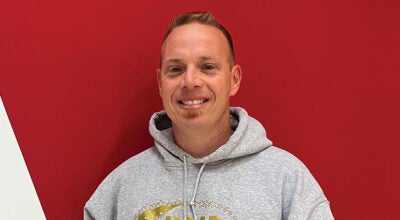Community can take steps to assure safety
Published 10:53 am Friday, February 8, 2013
Austin Superintendent
We all know about the tragedy that took place a few weeks ago in Newtown, Conn., and we now see different groups trying to find someone to blame. But it is not about blame, it is about helping our own children cope with pressures placed upon them and creating a safe environment for them to grow. There are a lot of troubled children and adults in this world. We know this. The question is what we can do to help our children, to provide a safe place for them, and allow them a place to try new and creative ideas without fear of being hurt physically or emotionally.
In the Austin School District, we work hard to make our schools safe. We are working with parents and community organizations through our Safety and Security Committee to develop policies and procedures to address bullying issues. We have procedures in place to keep classrooms secure and safe. These are the external, the visible, steps we must take to make our schools safe. The most important step, though, is to help our children have power over their own safety. The most challenging moments faced by parents or teachers come when you know that your child has a problem, but he is unable to talk to you about it. Some children may be more reluctant to share their troubles than others, but you can work to keep these crucial lines of communication open. Here are a few ideas on what we can do to keep communication open:
—Listen carefully and respectfully to what they’re saying. Everyone, including children, likes to be heard.
—Don’t jump to conclusions and try not to respond until you hear the end of the story. Sometimes children, especially young ones, can take a long time to get to the point of the story.
—Praise children when they ask for help. “I’m really glad you told me that,” is a good way to encourage children to come back to you with their fears. Remember we don’t decide when it’s the right time to talk about something important. Your child will approach you if they know you are open and won’t judge them.
—Respect their concerns and ideas even if they’re different from yours. If you tease a child because she thinks there’s a monster in the closet, she’s not going to tell you about the bully she’s afraid of at school, or if you make fun of her idea, she won’t try and think of new solutions.
Remind children periodically they should come to you if someone is threatening or intimidating them at school or anyplace else. Most children who attend school in this country rarely will find themselves in life-threatening situations, but kids do need to be reassured they’ll most likely be safe in school. Here are some ideas we as adults should convey to children:
—Let children know if anyone ever threatens them or someone else, it’s important they tell you about it — even if the person tells you to keep it a secret. If they know someone has been hurt or threatened, it’s also essential to tell. Loyalty to peers is something children learn early in life, and most children dread being labeled a “tattle tale.” However, children need to learn there are times when “telling” on a friend is essential to their safety as well as to the safety of their friend.
—Help children think ahead of time about who their adult resources are. Then, if something happens, they’ll know where to turn. You don’t want children to expect bad things to happen to them, but rather to know if something does happen they have someone who trusts them and will support them.
—We should remember to always encourage our children that no idea is a dumb idea. We can encourage them by asking questions and just plain listening to what they have to say and, if possible, helping them implement their ideas through play and simple side by side work experience.
As a parent, it’s important to let our children know we are available and willing to talk to them about whatever they want to talk about. Let them know you’re available when they need help. If your child does come to you with safety fears about school, talk together about how to address the concerns and please contact a teacher, principal, guidance counselor or me anytime you have concerns.





